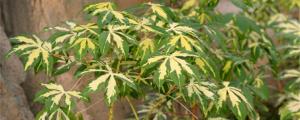What Causes White Mold on Tomato Store Bought Plants
Tomatoes are a favorite crop for home gardeners and farmers alike. However, white mold growth on tomato store bought plants can be a common occurrence. White mold is a fungal disease that can damage the entire crop if not treated promptly. In this article, we will discuss the causes of white mold on tomato store bought plants and how to manage it to ensure healthy tomato plants and a high yield.
Moisture and Humidity
The primary cause of white mold growth on tomato store bought plants is moisture and humidity. High moisture content in the soil and prolonged periods of high humidity can lead to the growth of white mold spores on the leaves, branches, and fruits of the tomato plant.
To prevent the buildup of moisture in the soil, avoid over-watering your tomato plants. Instead, water them deeply once a week, especially during hot and dry weather conditions. Avoid watering the leaves and stem of the tomato plant as this can promote the growth of fungi.
Providing ample ventilation in the growing area can also lessen the risk of white mold growth. Make sure there is sufficient air circulation around the tomato plants. This can be achieved by removing any debris or clutter surrounding the plants and spacing them properly.
Soil Conditions
The quality of the soil used to grow your tomato plants also plays a significant role in the development of white mold. Soil with poor drainage, high salt, and high acidity levels can promote the growth of white mold spores. Maintaining proper soil pH can be accomplished by testing the soil and adding amendments as necessary. Composting is also an excellent way to improve soil quality.
Insect Infestation
Insect infestation on tomato store bought plants can also contribute to the growth of white mold. Insects such as aphids, whiteflies, and thrips, thrive in humid conditions and secrete honeydew, a sugary substance that can attract mold spores. The presence of black sooty mold on the leaves is a tell-tale sign of insect activity.
To manage insect infestation, gardeners need to be vigilant in pest control. Regularly inspect the tomato plants for signs of insect activity and apply appropriate insecticides when necessary. Organic methods, such as using insecticidal soaps and neem oil, are also effective in controlling insect infestation without harming beneficial insects.
Mold Management
If white mold growth is detected on your tomato store bought plants, immediate action is needed to prevent the spread of the disease. The infected plant parts need to be removed and destroyed to prevent the spores from spreading. It is also essential to clean and disinfect any equipment, pots, or gardening tools that came in contact with the infected plant material.
Fungicides can also be used as a preventative or control measure for white mold growth. Be sure to select a fungicide that is appropriate for the tomato plant's stage of growth and follow the instructions carefully to avoid damage to the plant.
Conclusion
In conclusion, white mold growth on tomato store bought plants is caused by high moisture and humidity, poor soil conditions, and insect infestation. With proper management, gardeners can prevent and manage white mold growth on their tomato plants. Taking proactive measures in maintenance, pest control, and using appropriate fungicides can protect your tomato crop and provide healthy and delicious tomatoes for your home's consumption.

 how many times do yo...
how many times do yo... how many planted tre...
how many planted tre... how many pine trees ...
how many pine trees ... how many pecan trees...
how many pecan trees... how many plants comp...
how many plants comp... how many plants can ...
how many plants can ... how many plants and ...
how many plants and ... how many pepper plan...
how many pepper plan...






























